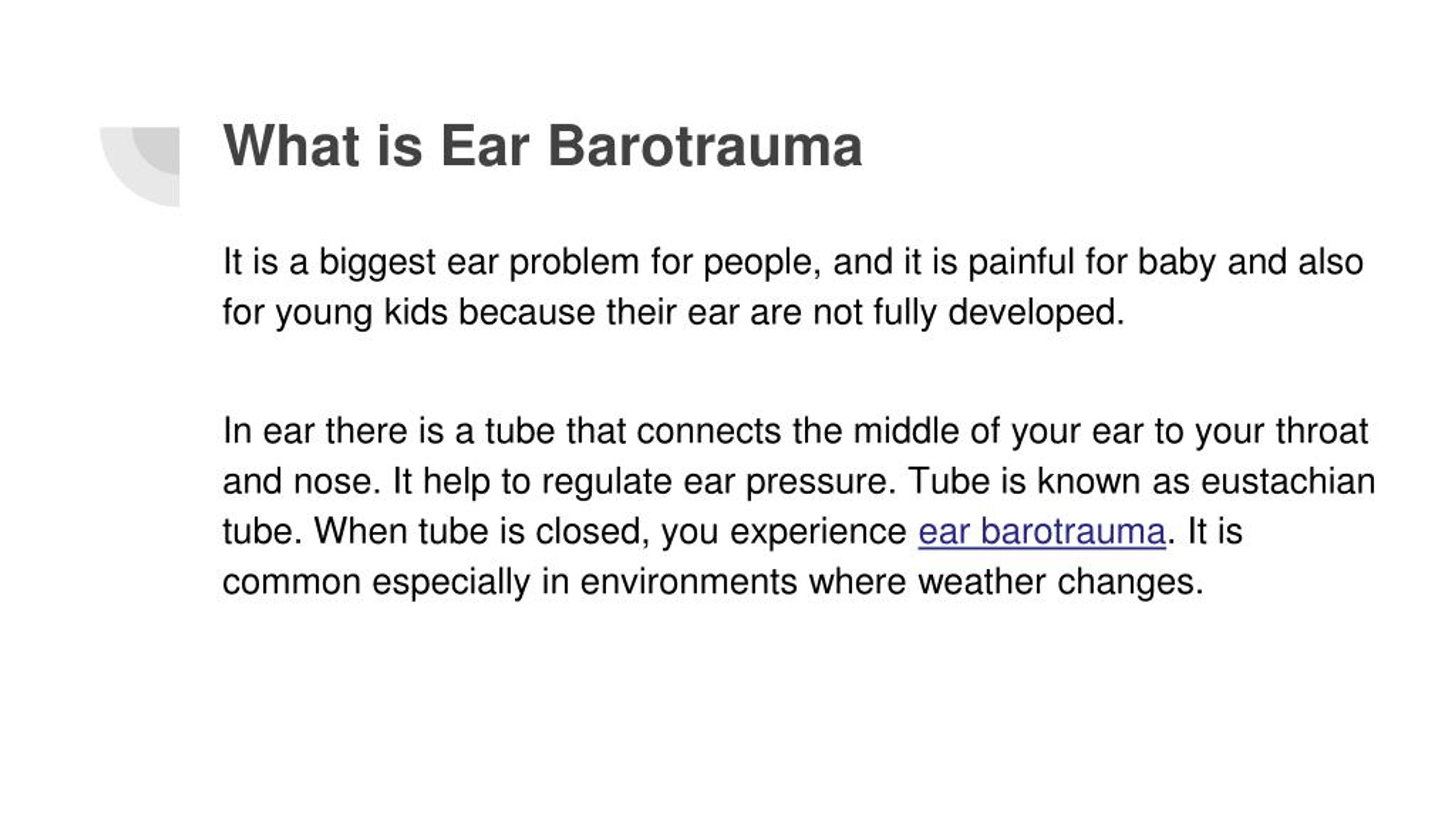

There is a need for a prospective data registry and controlled trials to better evaluate diagnostic and treatment algorithms. It may be possible for divers to return to subaquatic activity after stakeholder risk acceptance and informed consent, provided: (1) sensorineural hearing loss is stable and not severe (2) there is no vestibular involvement (via ENG) (3) high-resolution computed tomography has excluded anatomical predilection to IEBt and (4) education on equalising techniques is provided. Steroids are used, but without high-level evidence.

Exploratory surgery is indicated for severe or persisting vestibular symptoms or hearing loss, deterioration of symptoms, or lack of improvement over 10 days indicating significant pathology. Recompression does not appear to cause harm if the diagnosis (IEBt vs IEDCS) is doubtful (limited case data). Once diagnosed, conservative management is the recommended first line therapy for IEBt. IEBt in divers may be difficult to distinguish from inner ear decompression sickness (IEDCS), and requires dive-risk stratification and careful interrogation regarding diving-related ear events, clinical assessment, pure tone audiometry, a fistula test and electronystagmography (ENG).
#Diving barotrauma ear treatment series#
Twenty-five case series (majority surgical) provided guidance on diagnostic pathways nine solely reported divers. Sixty-nine papers/texts were identified and 54 accessed.

Following a literature search, the pathophysiology, diagnosis, and treatment of IEBt in divers and best-practice recommendations for returning to diving were reviewed. IEBt includes perilymph fistula, intralabyrinthine membrane tear, inner ear haemorrhage and other rarer pathologies. However, the change in middle ear pressure was not associated with the presence of middle ear symptoms.Inner ear barotrauma (IEBt) constitutes a spectrum of pressure-related pathology in the inner ear, with antecedent middle ear barotrauma (MEBt) common. The ability to equalize ear pressures after a jump had a large impact on the change in ear pressure. Rapid skydiving descent from high altitudes causes negative middle ear pressure changes. There was, however, a significant difference in pressure in those jumpers who did (-32.7 daPa) and did not (-75.7 daPa) equalize successfully after their jump. There were 13 subjects (18.8%) who had middle ear symptoms after descent, but there were no statistically significant differences in ear pressure changes in those with (-57.5 daPa) and without (-44.2 daPa) symptoms after their jump. A tympanometer was used to measure middle ear pressures in decapascals (daPa) on the ground before and after skydiving.Īverage middle ear pressures in 69 subjects were significantly different before (-23.5 daPa) and after (-70.5 daPa) the skydive. This prospective observational cohort enrolled skydivers on random days in Deland, FL. those who did not, and pressures in those who attempted equalization vs. An anonymous, electronic questionnaire was. Given this prevalence and the continuing growth of the diving industry, a comprehensive overview of the condition is warranted. This study assessed the effect of altitude change on middle ear pressures in skydivers by comparing changes in pressure before and after a skydive, pressure changes in those who developed middle ear symptoms vs. Introduction: Middle ear barotrauma (MEBt) is the most common medical complication in diving, posing a serious risk to dive safety. Middle-ear barotrauma is the accumulation of fluid and blood in the middle ear or rupture of the eardrum as a consequence of failed equalization of pressure in the air space of the middle ear during diving or flying. It is not known whether skydiving-related otic barotrauma could cause symptoms severe enough for medical attention or be implicated in skydiving-related accidents. Altitude-related otic barotrauma and its symptoms have been identified from air-travel, scuba diving, and hyperbaric chambers, but not in skydiving.


 0 kommentar(er)
0 kommentar(er)
